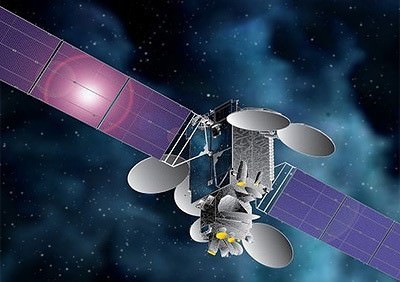After the company successfully landed a rocket (or to be more specific the first stage of the rocket) on a drone ship in the middle of the sea a while ago, SpaceX again proved that reusable rockets are indeed the future of space missions.
This is the second successful landing ever, and this time around the rocket had a much more complicated mission, which was successfully completed before landing softly on company’s drone ship named “I Still Love You”. The payload the rocket carried was a Japanese communication satellite, JCSAT-4. After the launch took place from Cape Canaveral, the rocket (SpaceX’s Falcon 9) sent a satellite into geosynchronous orbit, 22,000 miles above Earth; after that, the first stage of the rocket landed perfectly on a drone ship. This feat was much harder to achieve in comparison to the previous landing.
First, JCSAT-14 had to be placed into geosynchronous orbit, meaning that rocket had to return from 22,000 miles above the ground, much higher than where it was the last time. The previous landing was achieved after the rocket successfully delivered supplies to the ISS (International Space Station), placed into LEO (Low Earth Orbit) that’s just 250 miles above ground. So, the rocket landed, even if it was almost 100 times further than the last time.
Landing confirmed. Second stage continuing to carry JCSAT-14 to a Geosynchronous Transfer Orbit. pic.twitter.com/HfHI5cwoYX
— SpaceX (@SpaceX) May 6, 2016
Of course, the landing was much harder to accomplish; the first stage was traveling at the speed of around 2 km per second, double the speed of the return from Low Earth Orbit, which is around 1 km per second. Also, the rocket was much hotter, because of the higher speed of descent. Elon Musk stated that SpaceX will indeed reuse the recovered first stage of the rocket, in a couple of months. If they find success in that, all future space missions will be completed with reusable rockets, providing cheaper flights, less money spent on the actual launch, and the possibility of more frequent missions, because you don’t need to build a completely new rocket in order to launch the payload into space again.
JCSAT-14 should stay in the orbit for at least 15 years, and will be used for providing television signal and communication services. SpaceX already has 4 successful flights under its belt this year. Although all launches were successful, the rocket was effectively recovered only three times. Two times on a drone ship, and once on a landing pad placed on the stable ground. Only one recovery failed, because rocket exploded in mid-air, but not before it finished its mission.

JCSAT-14 – Image courtesy of Space Systems Loral
It seems that SpaceX finally perfected their rocket recovery technique. In the coming months and years, we should see more frequent launches that will be much less money hungry that today, giving relatively small companies a chance to launch their own satellites. Missions could even include sending multiple microsatellites into space for just a fraction of the cost when sending just one satellite.
Future is bright for SpaceX. They are already one of the few private owned companies providing services of sending the payload into space, and now they’ve become the only company that uses reusable rockets for their space missions, allowing them to perform more missions, and to further advance their rocket technology.

